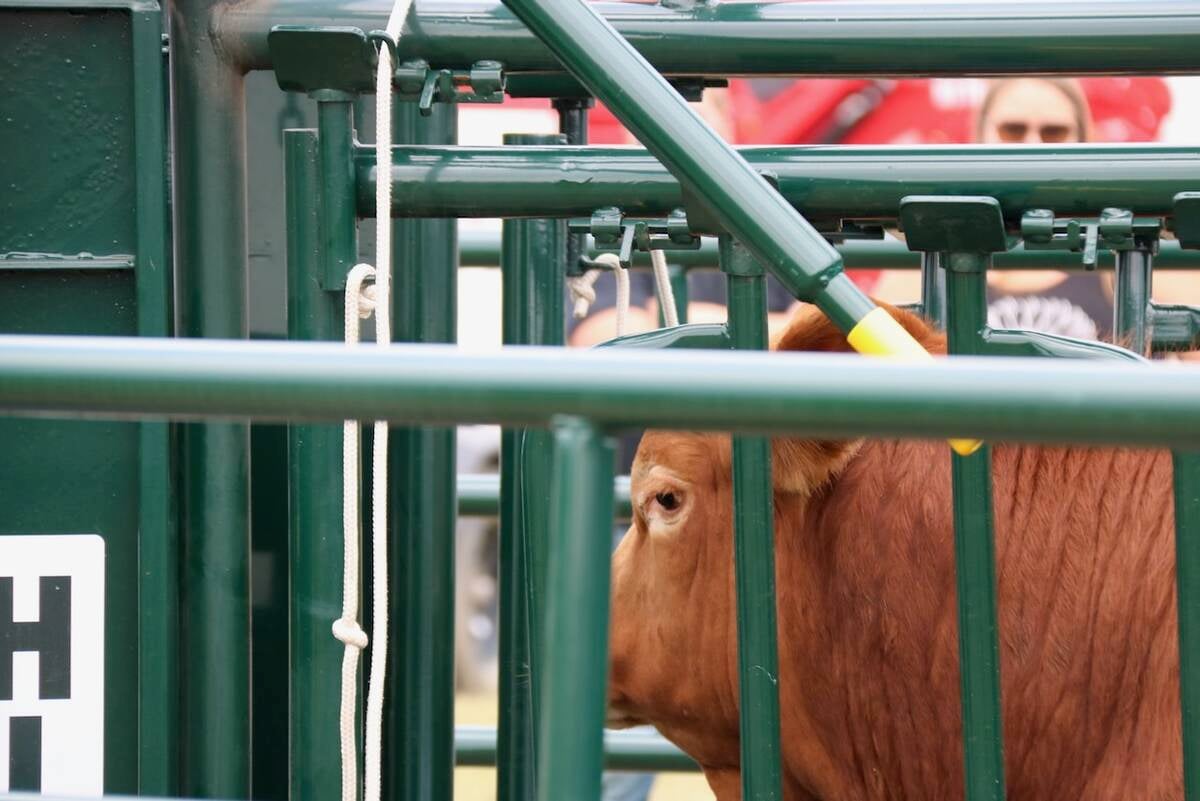Don’t be complacent, warns analyst | A tight supply is expected to keep prices high for a few years
MOOSE JAW, Sask. — Record prices and tight global supplies should mean a strong cattle market for the next few years, says market analyst Anne Wasko.
However, she also told the Sask-atchewan Stock Growers Association convention that producers shouldn’t become complacent during these good times.
“Be prepared. If you think at these kind of price levels it’s going to get quieter and you can just kind of kick back in the easy chair and take it easy, no,” she said.
“It’s going to get more volatile, there’s more risk, there’s more dollars on the table. You have to be more proactive, in my opinion. But it’s going to be good and fun talking about better prices for quite some time.”
Read Also

Good handling equipment a must on cattle operations
It’s important for the safety of producers and everyone else dealing with their stock that handling equipment is functional and safe.
She said record prices are being set throughout the sector.
Feeder cattle futures in Chicago earlier this month were at $2 per pound and up to $2.04 the day she addressed the producers in Moose Jaw.
Wasko said beef production this year will be down five percent in the United States and four percent in Canada.
“We’re getting down to a level that is now going to be the smallest since 1995. Even since 2008, our beef production this year is 20 percent smaller, so in a very short period of time we’ve drastically reduced available supply from a beef production perspective.”
The Canadian herd has hovered around 3.9 million head for about five years, which is down 1.4 million head from the 2006 peak.
“This has been a long consolidation phase,” Wasko said.
“We certainly haven’t had the signals to take off and expand the herd.”
Improved moisture in the United States’ drought area could lead to heifer retention, but she characterized any increase as tiny.
“Most are suggesting three to four years just to get the numbers back that they lost during the drought. It’s a long process yet.”
The situation in Canada is similar.
“The thing is, for the few heifers that we have kept, we’ve sold considerably more cattle,” Wasko said.
“Since 2010, as far as western Canadian beef heifers, we’ve only added just around 40,000 head and that just isn’t going to cut it when you’re sending 22 percent more cows to town, which is what we did last year be-tween domestic slaughter and cows exported for slaughter.”
She predicted cow disposal will be smaller this year after last year’s huge marketing year.
On the feedlot side, Canadian numbers are way off the usual pace.
About 3.5 million head a year historically go to feedlots.
“This year, we’re projecting a two to three percent reduction again in the number of steers and heifers to be fed here in Canada, and that’s going to bring us in at about 2.5 (or) 2.6 million head.”
The feeder supply will shrink even more if producers start to retain heifers.
However, she said it will take about three years before heifer retention starts to make a difference in herd numbers.
Fewer cattle have affected the feedlot sector in Saskatchewan and Alberta, said Wasko.
A survey has identified 157 finishing yards from a peak in 2004 of 250.
There are also 39 percent fewer producers than in 1996.
The U.S. herd is stabilizing after a significant decrease since 2006, during which time it shrank by four million head. About half of the drop was the result of the severe drought.
Wasko said steer and heifer slaughter in the United States this year will be less than 25 million head, down from 28 million head a couple of years ago. Next year she expects it will be closer to 24 million.
“We started off this year with the smallest cattle-on-feed inventory since ’97. That’s what’s showing up in the bullish market that I’m talking about.”
She also said steer and heifer weights are down 35 pounds over last year when record carcass weights were seen.
Corn was about $8 a bushel a year ago and cattle were heaviest. Now it’s about half that and the cattle are smaller. Wasko said its indicates more factors are at play than the price of feed.
She said the U.S. herd has been in a long period of profitability, but Canadian producers haven’t been profitable since 1998.
It could mean U.S. producers are more willing and able to expand, she added.
Wasko said all proteins are expensive at the retail level.
Pork supply, devastated by the porcine epidemic diarrhea virus, has dropped by about eight million hogs, prompting wholesale pork prices to climb 25 to 60 percent than last year.
Wasko said she often hears that consumers say they can’t buy beef because it’s too expensive.
However, the ratio is 1.8:1 when she compares beef to pork cut-out prices, which she describes as exceptional.
“Beef is not too expensive. All the proteins are expensive.”
She said retail prices in April were 13 percent higher, year over year. Ground beef in particular is 16 percent higher, year over year.















